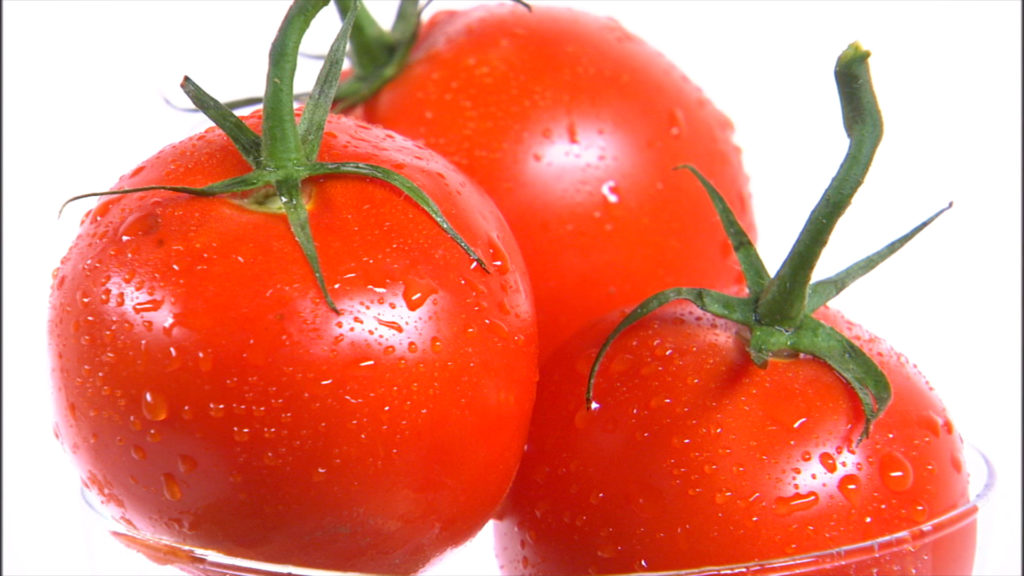Just label it. It’s not that hard. What is hard is believing that over 100 years after the creation of the Food and Drug Administration, I still don’t have the right to know what is in my food. (Melanie Warner’s book, Pandora’s Lunchbox, has a fascinating overview of the origins of the FDA, processed food, and food additives. Highly recommended, fast read.) The problem isn’t limited to genetically modified organisms, but it irks me that I can go into a store and buy some food without any right to know about literally hundreds of things that could be in it.
As a preliminary matter, educate yourself. You can read the entire text of the Washington state bill here: http://yeson522.com/about/read/ True, this is the “yes on 522” campaign page, but the entire text of the bill is on the website and there is a link to a .pdf version. This bill is different from the California bill that failed last year, in time frame, definitions, and requirements. If you live in Washington and get to vote on this issue, reading the actual text of the bill will inform you more than any ad or speech and you will not fall prey to misinformation. You can see the reasons for the bill, which are part of the preamble; you can also see the lengthy list of items that are exempt from the labeling requirement.
Why am I for labeling genetically modified food?
1. I don’t trust the opposition based on past bad behavior.
The loudest voice against the labeling law is a coalition led by seed producer Monsanto. Monsanto, in case you are unfamiliar, owns the patents to most of the genetically modified crops in the United States. According to the Associated Press, “five corporations and a trade group representing food manufacturers have largely financed efforts to defeat the measure, raising $17.2 million so far.” (See “Big money shapes WA GMO food label fight” at www.kgw.com, for example.) It is no secret that I am do not like Monsanto. I’m offended by their legal actions in the past decade. These include suing farmers who save seeds from crops grown from Monsanto seeds (seed-saving is a custom that dates back to the beginning of agriculture), and suing organic farmers whose crops were contaminated by Monsanto’s crops growing across the street (Mother Nature does not recognize property boundaries). As an attorney I understand the need to protect your intellectual property and contract rights, which arguable justifies suing the seed-savers, but suing the organic farmers is just rubbing salt into fresh wounds: first ruin their livelihood (GMO crops cannot be sold as organic, and after the organic farmers’ wheat was found to be contaminated several countries cancelled their contracts), then make them pay you for doing it.
1a. I don’t find the opposition’s arguments credible or persuasive. Personally, I’m not sure what real argument they have for NOT labeling genetically engineered foods. They openly state GMO food is safe to eat and has no health effects, and they are proud of their many products, so I’m not sure why Monsanto doesn’t want you to know which of your foods might have their technology in them. If the Monsanto argument is that a label is “fear mongering,” I’m not impressed. For one, foods are already required to state their ingredients on the label, including most food additives (many of which are already known to be dangerous). Those labels have not dissuaded people from buying foods with those labels. Second, Monsanto certainly has enough resources at their disposal to stage an education campaign to teach us just why we should not be afraid of genetic engineering in food. (Just look at how much they have spent opposing this campaign.) I would love to see widespread publication of all of the independent, peer-reviewed, third-party studies of genetically modified foods, so that we can all have easy access to the science.
As a final note on this topic, not all food manufacturers oppose this bill. Multiple food manufacturers, brands, and suppliers already support labeling genetically modified food. (A list of supporters for the Washington bill can be found on the Yes on 522 website.) Whole Foods has already adopted its own timetable to require all GMO-containing food to be labeled, and Chiptole has voluntarily undertaken to label any GMO food they use. I have not seen any information that indicates they are suffering, financially or otherwise.
2. It’s easy.
Food companies are constantly changing and updating their labels for all sorts of reasons—such as a change in the recipe of the product, or the addition of a new item to the mandatory allergens disclosures, or a change in status from non-Kosher to Kosher—this won’t be any different from any other label change. The bill doesn’t require companies to change labels the day it is passed, they will have plenty of time to make plans.
3. We want it.
Most Americans want a label. According to the New York Times poll taken in summer 2013, 93% of people surveyed want to know which foods are genetically modified.
4. Information wants to be free and available.
4a. These labels could literally save lives. One of my parents’ close friends is violently allergic to eggs. He is so allergic that when he once ate a sandwich that (unbeknownst to him) had been prepared on a grill that previously had an egg on it (but had been wiped down), he had such a severe reaction that he had to be hospitalized. Now the Washington law would not require disclosure of which ingredients are genetically modified or how, but if I had a severe food allergy I wouldn’t want to eat any product that might contain any element of the food to which I was allergic.
4b. These labels will allow people to make their own choices. Let me give you a concrete example: I don’t eat Twinkies. Why? Reading the label indicates that Twinkies may contain beef fat. I am a vegetarian. The information on the label allows me to make an informed decision on this point. A GMO label would allow me to make educated choices about my food.
5. I want to reduce pesticide usage.
Personally, I do not want to support the increased use of pesticides. Genetically engineered crops use more pesticides than other crops. As a result, there are more pesticide residues on those crops, and more pesticides pumped into the soil, water, and air. Part of why I choose organic when I can is to limit my personal consumption/usage of pesticides.
5a. Pesticides are bad for people who eat. Yes, pesticides are very helpful inventions that have allowed us to develop agriculture to the point where the earth grows enough food to feed everyone. In today’s world, there is no reason anyone has to starve. It wasn’t that long ago that people in the United States were literally dying of starvation. But even the most pro-pesticide person has to concede that pesticides are meant to kill pests, and are not intended to be a condiment for people’s food. Consumers have a right to know which produce is GMO so they can wash that produce extra carefully. (Not everyone can afford to choose organic, and organic produce is not universally available.) I’ll generally just rinse an organic crop with water, but I try to avoid eating pesticide residue on conventional crops.
5b. Pesticides are bad for soil, water, and bees. Consumers have a right to know so they can choose conventional crops (or even organic ones) that are in line with their personal environmental policies too.Pesticides end up on and I the soil and ground water. When it rains, pesticides from one farm wash into another farm, or even into my backyard. Just as the increased use of antibiotics has led to “superbug” infections that are antibiotic resistant and difficult or impossible to treat, use of pesticides leads to “superweeds” that are resistant to pesticides—requiring even more pesticides (either in quantity or variety) to control. Even if there are no additional pesticide residues on the resulting produce, pesticides applied to the crops end up in the soil and ground water. There is evidence that pesticides play a role in colony collapse disorder (the recent phenomenon of bees dying off in large numbers).
5c. Pesticides are bad for people who pick your food. More important, heavier applications of pesticides have a huge impact on the health of farm workers. I don’t know how many farm workers you have met, but every one I had met works very hard for long hours at this manual labor. Farm workers are generally paid a piece-work rate, which means they are paid for the amount of produce they harvest, not for the number of hours worked. Farm workers are unlikely to have access to health care for themselves and their families, many of whom live in farm-owned housing that is secluded from the nearest community. Farm workers are also frequently unable to afford child care, and as a result many bring their pre-school-aged children into the fields and orchards to work with them. Those children are already exposed to high levels of pesticides and fungicides, and don’t need an increased dose. You can go to www.ufw.org, the official home page of the United Farmworkers (which isn’t a union, because farmworkers do not have the legal right unionize), for links to information on farmworkers and pesticides.
What do you think? Why not just label it? Is this a health issue?
If you’ve found this post interesting or informative, please forward it to your friends (especially those in Washington State). I’d love to hear how many “no on 522” ads Washington residents are subject to on TV, radio, billboards, etc. and which organizations are sponsoring them.
Comments are welcome (even those opposed to the Washington bill) and are moderated. Civil discourse only, logic is encouraged, and please go read the text of the bill first.
Selected Resources
2011 lawsuit by organic farmers against Monsanto
http://www.stltoday.com/business/local/monsanto-wins-appeal-tossing-patent-suit-by-organic-farmers/article_9f7a9fdf-9e7c-5030-a14e-1d913e1ef3b6.html (St. Louis Post Dispatch, story by Bloomberg News)
http://thinkprogress.org/health/2013/06/11/2133121/appeals-court-monsanto-not-sue-farmers/ (Think Progress, a political news source, but with links to other sources)
NYT survey results
NYT topic on GMO food, opinion, science, and food policy
http://topics.nytimes.com/top/reference/timestopics/subjects/g/genetically_modified_food/index.html
Google Scholar is a great resource for scholarly articles, studies, research, and papers. A search for “pesticide bees collapse” produced 13,000 results.)

